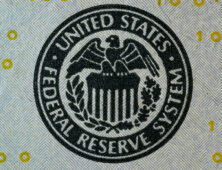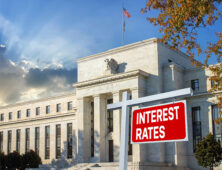Today’s Mortgage Rates in Dec 2024

Dec 31, 2024
Mortgage Rate Outlook: Elevated Yet Watchful 📈🔍
Heading into 2025, mortgage rates remain elevated. There’s a strong ceiling that has prevented them from spiking further, but the risk of floating is still considerable. If you’re considering locking in a rate, now may be the time—at least until we see a decisive break to the downside for rates.
1️⃣ US Debt Ceiling Concerns and Mortgage Rates 💵📈
The US debt ceiling is set to take center stage as incoming President Trump seeks to eliminate the annual cap on how high the Federal deficit can go. Removing this cap would allow lawmakers more flexibility in government spending, but it could also place upward pressure on mortgage rates.
Here’s why: As the Federal deficit grows, the US Treasury issues more treasuries to finance the debt. With a higher supply of treasuries hitting the market, investors demand a higher return, pushing yields on the 10-Year Treasury Note higher. Since mortgage rates are closely tied to the 10-Year yield, more spending without limits could spell trouble for homeowners and prospective buyers hoping for lower rates.
2️⃣ 2024: A Mixed Bag for the Economy 📉💼
2024 proved to be a stellar year for most segments of the US economy, except for housing, mortgages, and solar industries, which ended the year battered.
On the brighter side, wages rose well above inflation, supporting strong consumer spending. For homeowners who locked in rates of 4% or lower before 2022, their finances remain unphased by today’s elevated mortgage rates. Additionally, with stock portfolios near record levels, many retirees feel confident about their financial futures.
Looking ahead, 2025 could bring a softer labor market and slower economic growth, but the year begins with strong momentum across most sectors.
3️⃣ Housing Market Update: Growing Inventory on the Horizon 🏠📊
Although 2024 saw existing home sales dip to 4.15 million—reaching multi-decade lows—the positive development is an increase in active listing inventory. During the pandemic, inventory levels were minimal as buyer demand far exceeded available homes. Once mortgage rates climbed, homeowners locked into low interest rates had little incentive to sell and move, reinforcing decades-low supply.
However, as households evolve and families’ needs change, more homeowners may soon decide to “bite the bullet” and list their homes—an important step toward unlocking the housing market. This added supply would help both first-time and move-up buyers find suitable properties, contributing to a healthier market overall.
Dec 23, 2024
What’s Next for Mortgage Rates?📉
The 10-Year Treasury Note yield hit a key resistance ceiling and appears to be stabilizing. While there’s no immediate rush to lock in rates, any shift in market sentiment could reverse improvements. If you opt to float, ensure you’re ready to lock quickly if indicators turn negative.
The “Hawkish Cut”: Fed’s Mixed Message 📉
The Federal Reserve’s interest rate cut last week was anything but dovish. While the central bank decided to reduce rates, some members questioned whether a cut was warranted at all. The Fed’s future projections for 2025 saw planned cuts scaled back from 1% to ½%, citing stronger-than-expected economic activity (reinforced by last Wednesday’s 3.1% GDP growth) and persistently high inflation. Mortgage rates reacted swiftly, rising by at least ¼% in the hours following the announcement.
Congressional Funding Turmoil: Musk’s Influence Emerges🔍
A bipartisan spending bill aimed at keeping the government funded was upended on Thursday, following tweets from Elon Musk urging that it “must not be passed.” Incoming President Trump quickly backed Musk, prompting Republicans to withdraw their support for the measure. This incident underscores Elon’s growing sway over the financial decisions of the US government and signals a contentious future for any attempts to direct federal spending. Ultimately, a renegotiated bill narrowly averted a government shutdown.
Inflation Progress: PCE Provides Relief
Friday offered some welcome news for bond markets, as the Fed’s favored inflation gauge—Personal Consumption Expenditures (PCE)—revealed a modest 0.1% price growth in November. Headline inflation on an annualized basis now sits at 2.4%, while the Core rate (excluding food and energy) is 2.8%—still above the Fed’s 2% target. Although there’s more work to do, the data suggest some easing of inflationary pressures.
Dec 17, 2024
Market Outlook: Locking vs. Floating 🔒📉
Considering both the technical indicators (yields above the 200-day moving average) and the high-stakes reports due this week, maintaining a locking bias is a sensible approach. If you need to secure a rate soon, now may be the time to act before additional data potentially moves the market.
Yields Rise Above Key Threshold: Eyeing the PCE Report 📊📉
Both the 10-Year Treasury Note yield and mortgage bond interest rates have climbed above their 200-day moving average, disappointing homeowners hoping for lower rates. This breakout either reverses or solidifies by Friday, when the Fed’s preferred measure of inflation—the Personal Consumption Expenditures (PCE) report for November—is released. Although monthly inflation growth may be modest, the market’s focus on the annualized rate could mean trouble if that annual pace moves higher. Such a development would likely put more upward pressure on mortgage interest rates.
Fed Day and Future Rate Cuts: Reading Between the Lines 🏦🔍
On Wednesday, the Federal Reserve is widely expected to cut rates by 0.25%. While this move is already priced into the market, the real intrigue lies in the Fed’s updated expectations for future rate cuts. Previously, the Fed envisioned an additional 1% cut in 2025. However, persistent inflation and ongoing economic strength may prompt them to revise that figure down to 0.75% or possibly less. If the Fed signals fewer cuts than expected, mortgage rates may not find much relief.
There’s a silver lining: the Fed could consider slowing their Quantitative Tightening (QT) process soon, boosting bond market liquidity. Such a step would help stabilize mortgage rates and temper some of the volatility we’ve witnessed lately.
2025 Housing Market Predictions: Proceed with Caution 🏠🔮
Forecasts for the 2025 housing market vary widely, with some, like Zillow, predicting a “dramatic” drop in mortgage rates fueling sales growth and steady home price appreciation. Yet, given how many experts misjudged 2024, it’s wise to remain skeptical. The post-2022 environment has proven that both housing prices and interest rates are harder to predict than ever, characterized by high volatility and limited stability.
Dec 09, 2024
Market Outlook: Locking vs. Floating 🔒📉
Currently, yields on the 10-Year Treasury Note are sitting just below their 200-day moving average. If Wednesday’s CPI report comes in tame, we could see mortgage rates take another step lower.
However, floating remains risky. If you choose to float, ensure your loan is ready to lock quickly in case market sentiment shifts.
November Jobs Report Shows Mixed Signals 📉✅
Friday’s Bureau of Labor Statistics (BLS) report revealed 227,000 new jobs created in November, surpassing expectations of 220,000. However, the report also unveiled some underlying weaknesses that were received positively by the bond market:
- Strike-related bounce back: Much of the job creation stemmed from workers returning post-strike or after hurricane disruptions, making the gains less robust than they appear.
- Two-month trend: October’s jobs figure was revised from 12,000 to 36,000, bringing the two-month average to just 131,500.
- Unemployment uptick: The unemployment rate rose slightly from 4.1% to 4.2%.
This combination of factors helped ease pressure on mortgage interest rates, providing a favorable backdrop for borrowers.
A Crucial Week Ahead for Rates 🔍💸
The next 10 days will set the stage for the long-term direction of mortgage rates. Key events to watch include:
Consumer Price Index (CPI) Report: Scheduled for release Wednesday, this report is expected to show a slower monthly inflation rate of 0.2% (down from 0.3%). A tame report could ease inflation concerns and benefit mortgage rates.
Fed Rate Decision on Dec. 18: Markets widely expect the Fed to cut rates by ¼%, marking their third cut of 2024 (¾% total for the year). This will likely signal a continuation of rate reductions into 2025, aligning with the Fed’s goal of supporting current economic conditions.
Homeowners Celebrate a Stellar 2024 🏡📈
2024 has been an outstanding year for homeownership, with home values projected to end the year 5.25% higher than where they began. For perspective, that’s an average $26,250 increase in equity for a $500,000 home—or about $2,187.50 in monthly value growth.
Many who opted to sit out of the market due to higher rates are now regretting their decision, as the cost of waiting far outweighed the impact of elevated mortgage rates. Looking ahead to 2025, home values are expected to grow by 3.78% annually, which, while lower than 2024, still represents meaningful wealth creation for homeowners.
Dec 03, 2024
Market Outlook: Locking vs. Floating 🔒📉
While mortgage rates have improved a bit since last week, until the 10-Year Treasury Note yield makes a decisive move beneath its 200 day moving average, the risk of floating is high.
Job Jamboree: Why Labor Reports Could Rock the Fed’s World 🛠️📊
Labor reports will be the focus of this week, with ADP set to release its estimates of new job creations in the month of November on Wednesday, and the more important reading from the Bureau of Labor Statistics (BLS) is set for release on Friday. These reports will be heavily weighted into the Federal Reserve’s decision on interest rates for their scheduled announcement on December 18th.
While a strong report from the BLS could sway Fed members away from cutting rates, a weak report could ensure that we do get a cut. Given that we are heading into the stronger retail season, we could easily see the actual report exceed current estimates of 195,000 new jobs creations.
The Treasury Tumble: What Last Week’s Rate Dip Means for You 💸📉
Despite fears of pending tariffs driving mortgage rates closer to 8%, rates did dip lower last week. This pushed the yields on the 10-Year Treasury Note below its 200 day moving average. This is a significant move, as a decisive break beneath this level would indicate a change of direction, meaning we could see lower rates in the days and weeks ahead.
Once this barrier is broken, rates usually stay below their 200 day moving average for an extended period of time. However, since last week was a shortened holiday, with many traders on vacation on Friday, we can’t put much stock in this lower move holding. If we can see rates close beneath this critical level for a few days in a row, that would be a positive indicator that this move could be sustainable.
Wages vs. Inflation: A Ticking Time Bomb for Rates? ⏱️💵
Wage growth readings from the BLS will also play a role in the Fed’s decision on interest rates. We have seen hourly earnings grow well above the rate of inflation the past couple of years. The concern of the Fed is that wages have grown by 4.6% from October 2023 to October 2024, while inflation grew by just 2.6% during the same period. Higher wages are generally an early indicator of future inflation, which is why the Fed would like to see wage growth decrease in the months to come. Having the Fed hold rates higher for longer would help ensure wage pressure softens. However, that would be detrimental to mortgage rates in the near term.
Nov 25, 2024
Market Outlook: Locking vs. Floating 🔒📉
While mortgage rate pricing is improving today, we’ll maintain a locking bias unless we see mortgage bonds break decisively above their 200-day moving average. This remains a critical technical indicator to watch in the coming days.
If you have any questions about locking in your rate or timing your next mortgage move, feel free to reach out.
Markets React Positively to Treasury Secretary Nominee 💼✅
President Trump’s nomination of Scott Bessent for Treasury Secretary has received approval from financial markets. As the founder of Key Square Group, a global macro investment firm, Bessent brings substantial financial experience and credibility to the role. His history of supporting both Democratic and Republican politicians highlights his willingness to prioritize sound decisions over party lines, which has reassured investors. This announcement has already helped soften mortgage interest rates, with potential for rates to improve further in the near term.
Critical Inflation Data Ahead This Week 📈🔥
Although this is a short trading week, there’s important news that could shape the near-term direction for interest rates. On Wednesday, we’ll get the Personal Consumption Expenditures (PCE) report—the Fed’s preferred measure of inflation—for October.
Last month, Headline Inflation came in at a 2.1% annualized rate, but this month’s report is expected to show a rise to 2.3%. While inflation on a month-over-month basis remains at a manageable pace, the focus will be on the annualized figure, which could pressure rates higher if it comes in as anticipated.
Labor Supply, Wage Inflation, and Balance Concerns 🛠️📉
Addressing inflation often starts with increasing supply. When supply outpaces demand, prices are naturally pushed down. With unemployment at a low 4.1%, we’re nearing what’s considered “full employment.” Any reduction in the labor supply—whether through deportations or federal government job cuts—could spur wage inflation, as fewer workers would drive wages higher. Historically, rising wages increase demand for goods and services, which in turn pressures inflation.
The key question is whether the cuts in federal employees will offset the labor supply reductions enough to maintain a healthy balance. For now, markets are watching closely to see how these dynamics unfold.
Nov 18, 2024
Mortgage bonds are at a critical floor of support. A break lower would likely lead to a more dramatic increase in mortgages. Given this risk, we will maintain a locking bias until we see bond prices stabilize.
🚀Mortgage Rates: The Fed Plays It Cool
Mortgage rates ended the week higher following remarks last Thursday from the Federal Reserve Chairman, Jerome Powell, stating that the Fed doesn’t need to be “in a hurry” to cut interest rates given the current strength of the US economy and with inflation still running above the Fed’s target rate of 2%. Although many still anticipate another 1/4% cut in December, the odds of this happening did fall to just 34.7%, according to CME Group’s FedWatch Tool. This is a sharp drop from where odds were a couple weeks ago and could spell more trouble for the mortgage industry ahead.
⛽Oil Prices: Below $68… but Don’t Celebrate Yet
With gas prices being one of the hot topics in the recent Presidential election, and oil prices now below $68 a barrel, it will be hard to see oil companies willing to start new wells if the price were to get much below current levels. It is estimated that the breakeven going rate for oil to justify new drilling needs to be near $62 on the low end. This is expected to yield a target profit of $15 a barrel. It will take time to see what happens, but a significant drop in gas prices without the US falling into a recession could be more challenging than hoped for.
🛍️Retail Sales: The Great Spending Divide
Last week’s Retail Sales report for the month of October showed that consumer spending continues to run hot. We are in a mixed economy where about half of the country owns a home that was purchased prior to 2022 and has a low-rate fixed mortgage. This segment has been protected from the strongest driver of consumer inflation, housing costs. This group has also experienced record level income growth, which equates to excess disposable income to spend due to having low fixed housing costs. This has led much of the strength we have experienced in both retail sales and consumer spending.
Nov 14, 2024
Rates remain extremely volatile. We will maintain a locking bias.
The Election Hangover: Will Rates Calm Down Soon? 💸
With the results of the election now behind us, there is more certainty as to what the path ahead looks like. Interest rates moved higher over the past couple of months as odds started to favor a Trump victory. With much of that now priced into current rates, we hopefully will soon see the markets stabilize, which could allow interest rates to come back down a little. I’m hopeful that the move higher was over exaggerated, which would present the opportunity to have some relief in the weeks to come.
$25,000 Tax Credit is Off the Table—But Buyers Aren’t! 🏡
With the chances of a $25,000 first time homebuyer tax credit no longer at play, we can expect to see some potential homebuyers who were sitting on the sidelines make the next move towards homeownership. This could provide some hope for a small surge of buyers during the season where the home buying market is always slow. It is also the season where we see a reduction in the pace of home price appreciation, which could be a great benefit for those who are searching for a good deal.
Fed Fight: Independence or Influence? 🤔
The Federal Reserve has again been thrust into the spotlight, as President Trump pushes for the President to have more influence over the Fed policies.
Current Fed Chairman, Jerome Powell, has pushed back on this idea, saying that he will not leave office even if he is asked by the Trump administration to step down. Powell firmly believes in the Fed maintaining its independence from government control. However, the movement to put an end to the central bank has even attracted support from Trump ally Elon Musk. Given the Fed’s stated purpose of serving a dual mandate of balancing maximum employment while maintaining acceptable rates of inflation, many believe the Fed’s true purpose is to ensure that the US dollar remains the world’s currency. With such crucial stakes at play, the outcome is certain to have impact on our financial futures.











